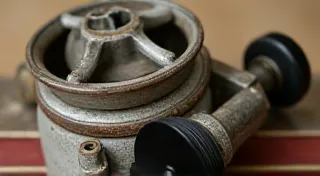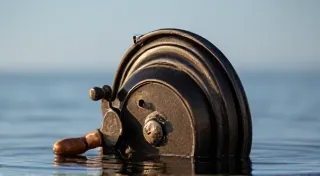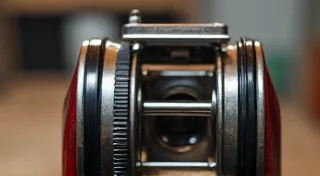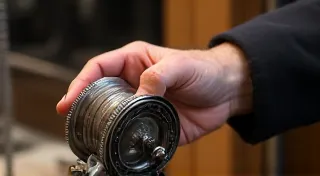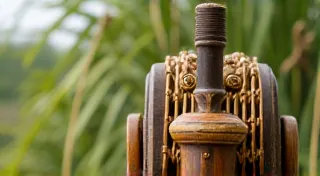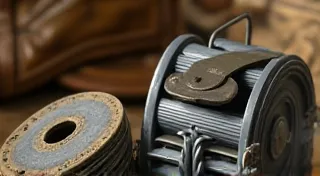Reel Repair Basics: Preserving Your Vintage Treasures
Collecting vintage fishing reels is a rewarding hobby, connecting us to a bygone era of craftsmanship and angling history. But owning these treasures comes with responsibility. Keeping your reels in good working order isn't just about nostalgia; it’s about preservation. Even seemingly minor issues, left unaddressed, can lead to significant deterioration over time. This article dives into the fundamental repair and maintenance techniques every reel collector should know. We're focusing on the basics – the things you can confidently tackle yourself – to keep your reels spinning smoothly and your collection thriving. Understanding these principles will not only save you money but will also deepen your appreciation for the ingenuity and quality of these classic pieces of fishing gear.
Understanding the Scope of Repair
Before you grab a screwdriver, it’s crucial to understand the different levels of reel repair. Some issues are simple preventative maintenance, while others require more specialized skills and tools.
- Cleaning & Lubrication: The most common and easiest task. This involves removing dirt, grime, and old lubricant, then applying fresh oil or grease.
- Minor Adjustments: These involve tightening screws, adjusting drag washers, or correcting minor binding.
- Part Replacement: Replacing worn or broken parts, like line guides, drag washers, or pawls. This often requires sourcing replacement parts.
- Major Restoration: A complete overhaul, involving disassembly, cleaning, rust removal, potential re-finishing, and replacement of numerous parts. This is best left to experienced restorers.
This guide focuses primarily on cleaning and minor adjustments. While part replacement is possible, sourcing correct parts can be challenging, and improper installation can damage the reel.
Tools of the Trade
You don’t need a fully equipped machine shop to perform basic reel repair. Here’s a list of essential tools:
- Screwdrivers: A set of small, precision screwdrivers, including both flathead and Phillips head. Having a variety of sizes is vital.
- Pliers: Needle-nose pliers are particularly useful for manipulating small parts.
- Tweezers: Fine-tipped tweezers are essential for handling tiny components.
- Cleaning Solutions: Isopropyl alcohol (91% or higher) is an excellent solvent for removing grease and grime. Avoid harsh chemicals that can damage the reel's finish.
- Lubricants: Choose lubricants specifically designed for fishing reels. Light oils are suitable for bearings, while greases are better for gears and other friction points.
- Cleaning Brushes: Small brushes, like old toothbrushes or specialized reel cleaning brushes, are helpful for dislodging stubborn dirt.
- Reed & Hickman tools: For removing and installing bearing cages.
Good lighting is also critical for seeing intricate details.
The Cleaning Process
Regular cleaning is the cornerstone of reel preservation. Here's a step-by-step guide:
- Disassembly (Partial): Most reels don’t require full disassembly for routine cleaning. Typically, you're aiming to access the internal workings without taking the entire mechanism apart. Consult online resources (like reel-specific forums) for guidance on partial disassembly.
- Initial Cleaning: Use a brush and isopropyl alcohol to remove loose dirt and debris from the reel’s exterior and accessible internal parts.
- Deep Cleaning: Submerge accessible parts in a container of isopropyl alcohol. Use a brush to scrub away stubborn grime. Rinse thoroughly with clean alcohol.
- Drying: Allow the parts to dry completely. Compressed air can speed up the process.
- Lubrication: Apply appropriate lubricants to the gears, bearings, and other moving parts. Refer to reel-specific resources for lubrication points and recommended lubricants.
- Reassembly: Carefully reassemble the reel, ensuring all parts are properly aligned and secured.
Remember to take photos during disassembly; this serves as a visual guide for reassembly.

Addressing Common Issues
Beyond basic cleaning, here are some common issues you might encounter and how to address them:
- Binding: If the reel feels stiff or binds during retrieval, it's likely due to a lack of lubrication or a misaligned part. Carefully inspect the reel for any obstructions and ensure all parts move freely.
- Line Management Problems: If the line doesn’t lay properly on the spool or line guide, the guide might be bent or misaligned. Carefully straighten the guide using pliers (be very careful not to damage it further).
- Drag Washer Issues: Over time, drag washers can become glazed or sticky, reducing their effectiveness. Replacement with new washers is often the best solution.
- Corrosion: Surface rust can be removed with fine steel wool or a rust remover. Protect the reel with a light coat of oil.
Understanding Specific Reel Types
Different reel manufacturers and designs require slightly different approaches to repair.
- Early American Reels: These reels often feature intricate mechanisms and are more prone to corrosion. Gentle cleaning and lubrication are essential.
- European Reels (e.g., Alcedo, Hardy): These reels are often beautifully crafted and require meticulous care.
- Japanese Reels (e.g., Shimano, Penn): These reels often have complex designs with precision-engineered parts. Replacing worn parts can be challenging.
Research the specific reel model you are working on to understand its unique features and potential repair challenges.
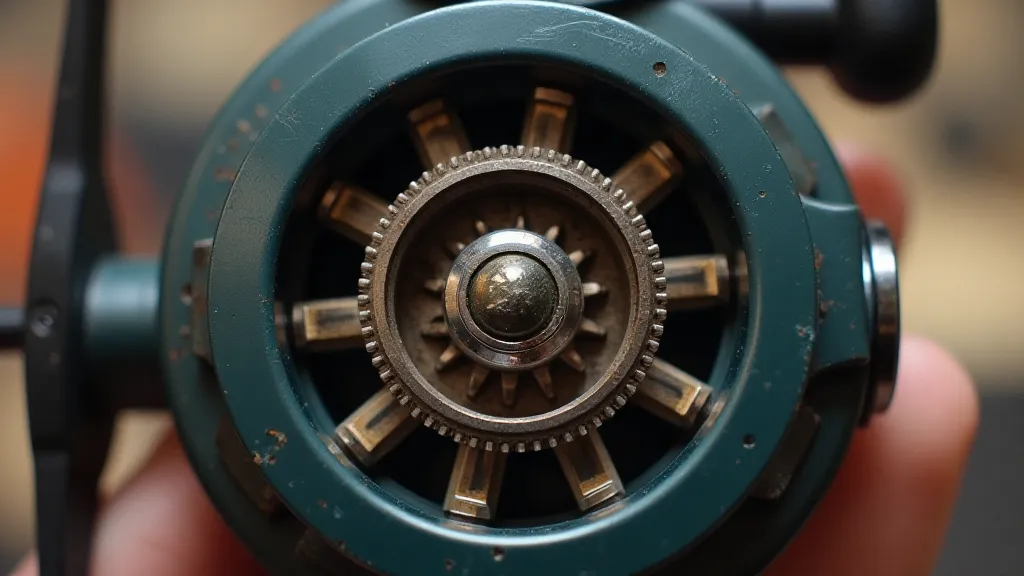
Preservation vs. Restoration
It’s crucial to distinguish between preservation and restoration. Preservation focuses on maintaining the reel’s original condition, while restoration involves returning it to a like-new state. For many collectors, preservation is the preferred approach, as it respects the reel’s history and patina. Aggressive restoration can diminish a reel’s value and authenticity.
Seeking Expert Help
Some reel repair tasks are best left to professionals. If you’re unsure about a particular repair, or if the reel is particularly valuable or rare, consult a qualified reel repair specialist. There are many online forums and communities dedicated to vintage fishing reel restoration where you can seek advice.
Resources & Further Learning
The world of vintage fishing reel collecting is vast and fascinating. There are numerous resources available to help you deepen your knowledge and skills:
- Online Forums: Reel Talk, Vintage Fishing Reels Forum.
- Books: "American Fishing Reels" by Robert N. and Helen C. Spencer.
- Museums: Some fishing museums have exhibits dedicated to vintage reels.
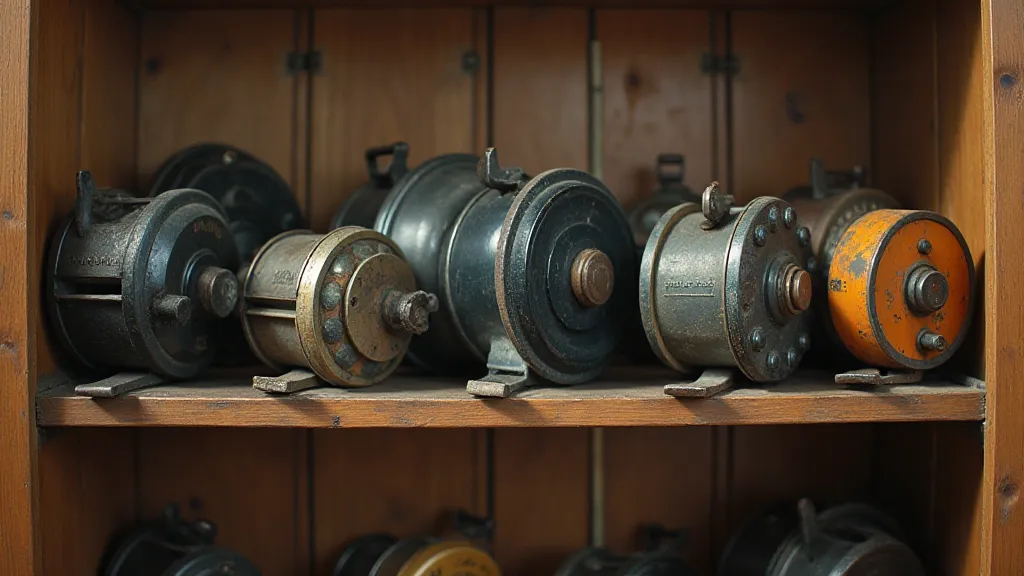
By following these basic repair and maintenance principles, you can keep your vintage fishing reels in excellent condition for years to come, ensuring that these pieces of angling history continue to spin and delight future generations of collectors.
